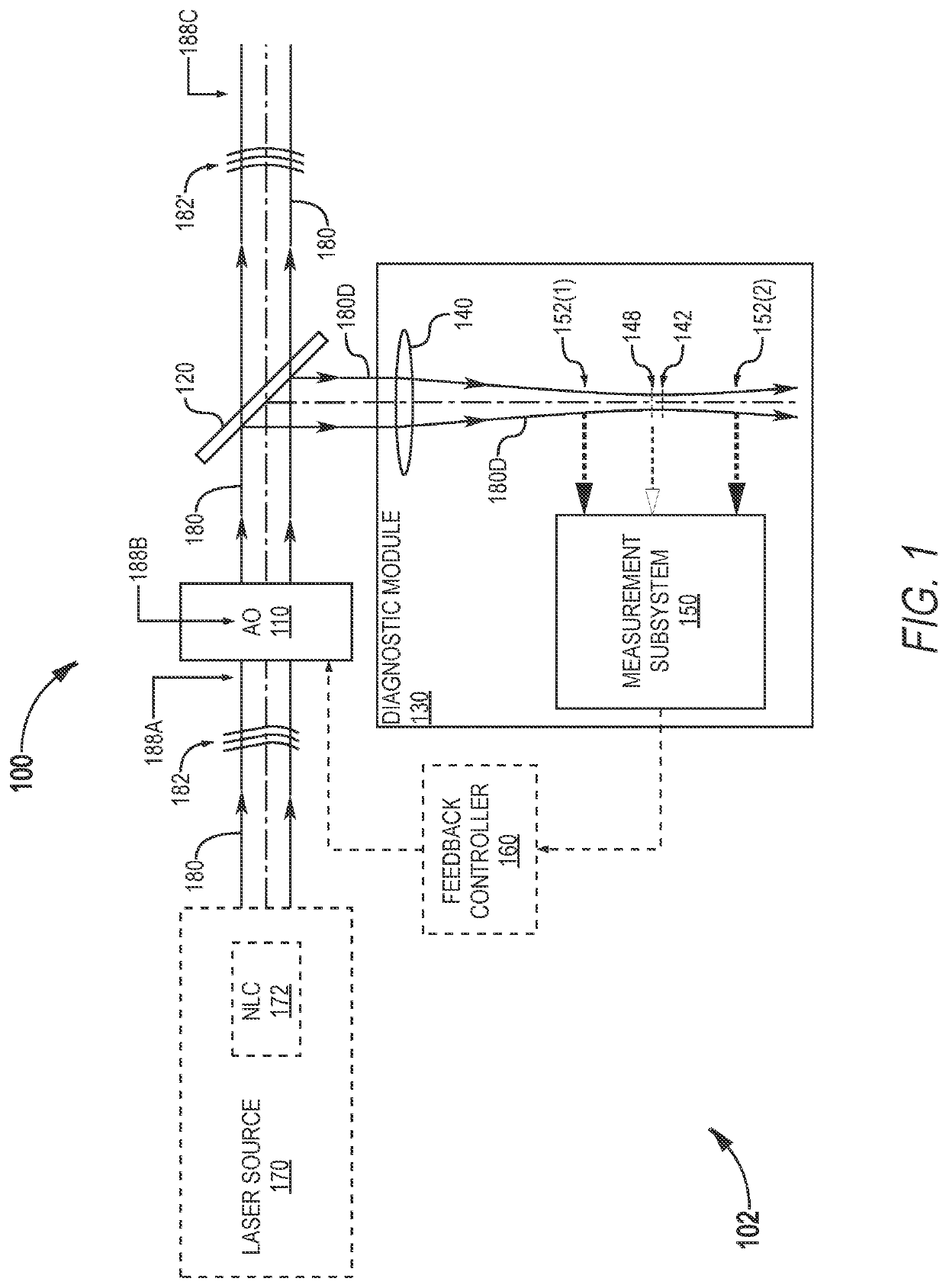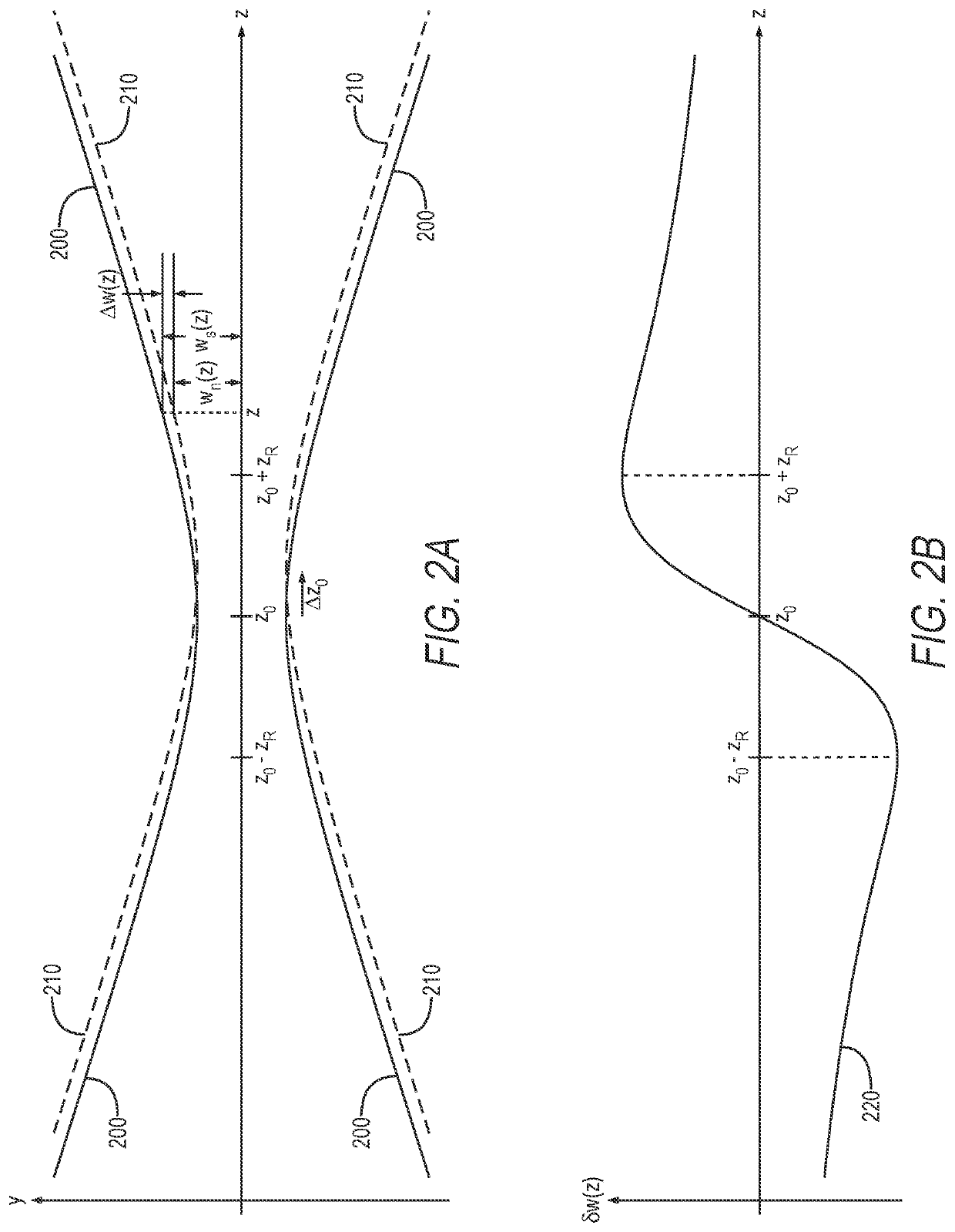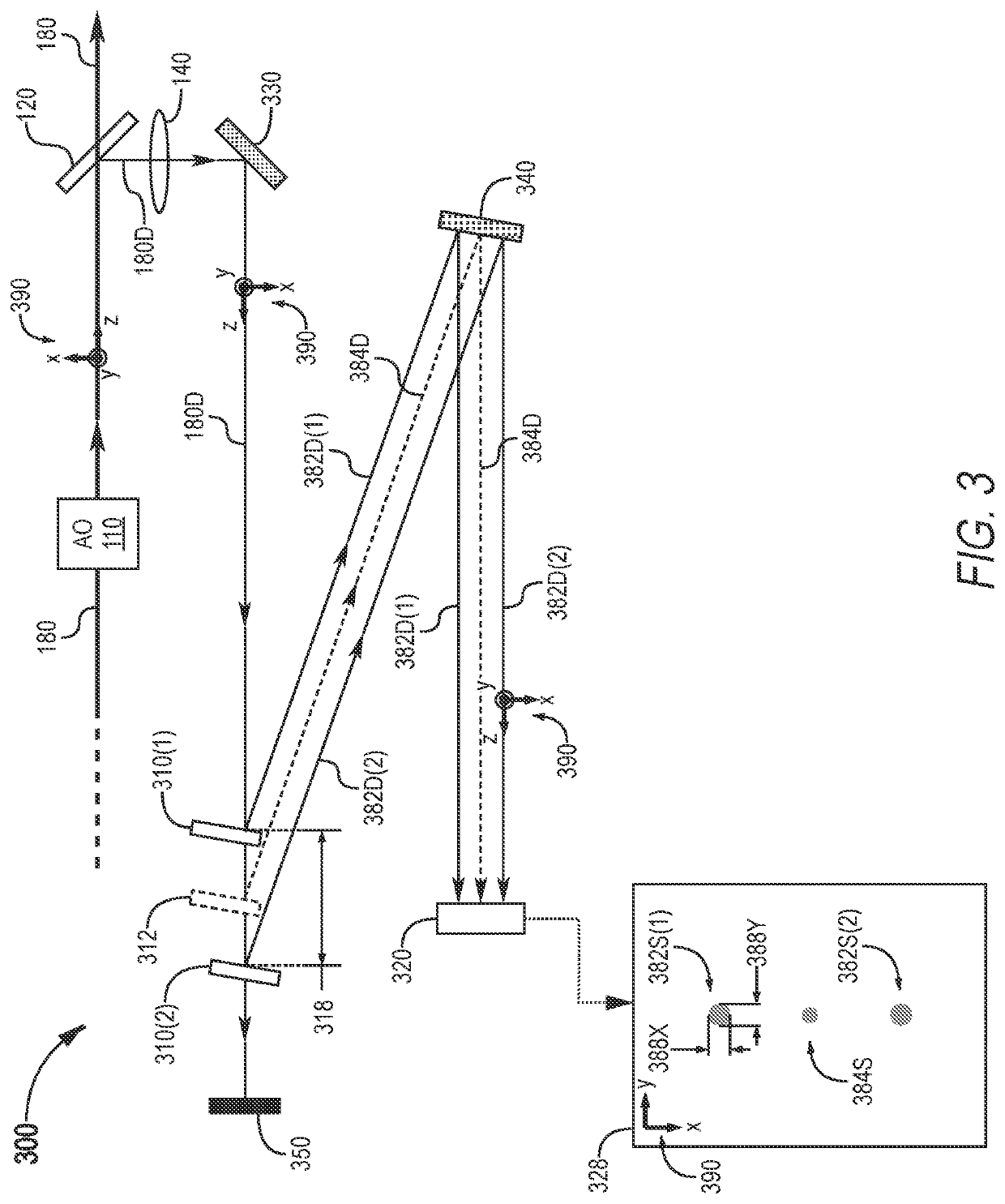Laser beam wavefront correction with adaptive optics and mid-field monitoring
a wavefront correction and adaptive optics technology, applied in the field of laser beam wavefront correction, can solve the problem of wavefront deformation problem and the shift in the location and size of the laser beam waist, and achieve the effect of reducing cost and complexity
- Summary
- Abstract
- Description
- Claims
- Application Information
AI Technical Summary
Benefits of technology
Problems solved by technology
Method used
Image
Examples
Embodiment Construction
[0026]Referring now to the drawings, wherein like components are designated by like numerals, FIG. 1 illustrates one system 100 for correcting the wavefront 182 of a laser beam 180. System 100 system utilizes beam size measurement in the mid-field of laser beam 180. FIG. 1 shows system 100 in an example scenario where system 100 is incorporated into a laser apparatus 102.
[0027]Laser apparatus 102 includes system 100, and a laser source 170 that generates laser beam 180. Laser source 170 may include one or more elements that cause deformation of wavefront 182. Herein, wavefront deformation refers to an unwanted wavefront change as opposed to, e.g., the intended wavefront change imparted by a lens. For example, laser source 170 may include a nonlinear crystal (NLC) 172 that generates laser beam 180 through frequency conversion but, undesirably, also deforms wavefront 182. In one implementation, laser beam 180 is a high-power ultraviolet (UV) laser beam that causes nonlinear crystal 17...
PUM
 Login to View More
Login to View More Abstract
Description
Claims
Application Information
 Login to View More
Login to View More - R&D
- Intellectual Property
- Life Sciences
- Materials
- Tech Scout
- Unparalleled Data Quality
- Higher Quality Content
- 60% Fewer Hallucinations
Browse by: Latest US Patents, China's latest patents, Technical Efficacy Thesaurus, Application Domain, Technology Topic, Popular Technical Reports.
© 2025 PatSnap. All rights reserved.Legal|Privacy policy|Modern Slavery Act Transparency Statement|Sitemap|About US| Contact US: help@patsnap.com



